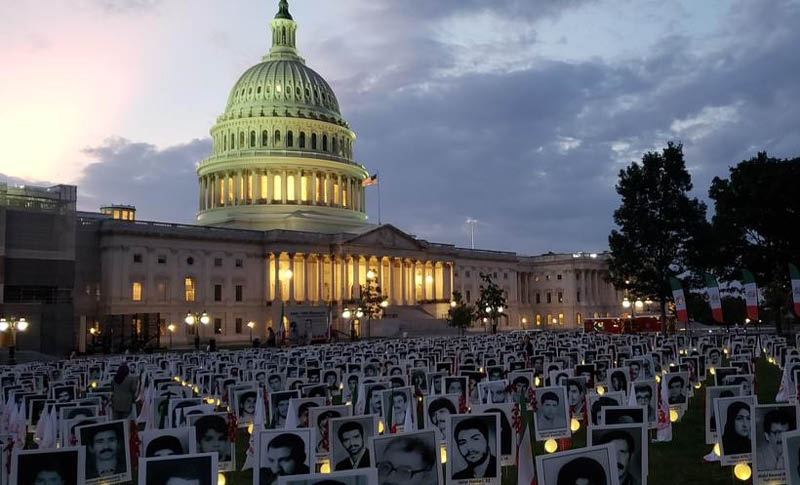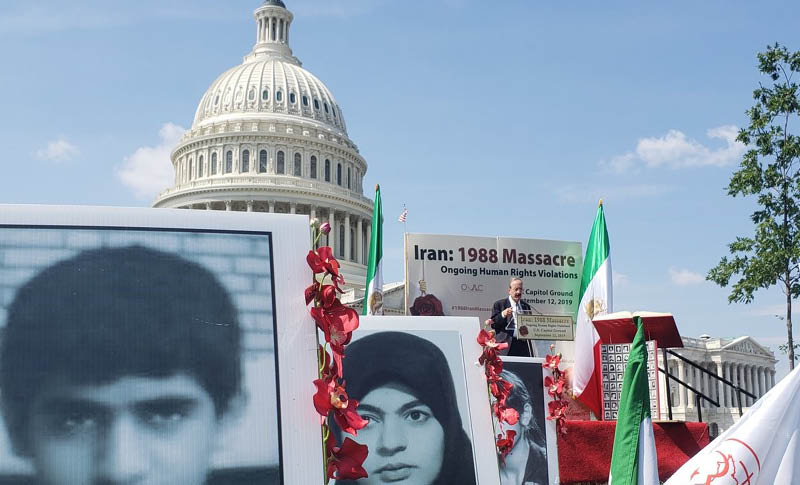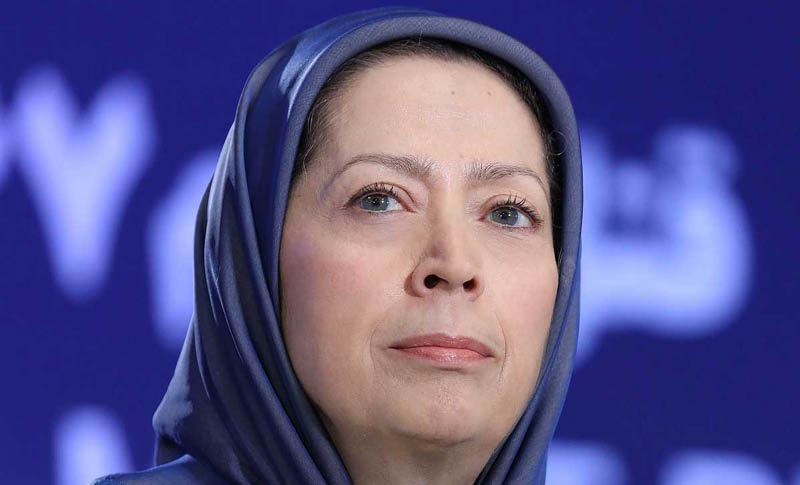
By Armin Baldwin
On Thursday, September 12, 2019, an exhibition was held on the grounds of U.S. Capitol in honor of 30,000 political prisoners massacred in 1988 by the Iranian regime in the span of just eight weeks, and in condemnation of ongoing human rights violations in Iran.
This rally was organized by the Organization of Iranian American Communities (OIAC) in aim to save the lives of the innocent in Iran and hold accountable the religious despots who are committing these atrocities.

Republican congressman Honorable Eliot Engel, Chairman of House Foreign Affairs Committee spoke to Iranian community’s exhibition, remembering the 1988 Massacre in Iran, and Sahar Khodayari, 28-year-old football fan who died after setting herself on fire in protest to being sentenced to imprisonment for entering a soccer stadium banned for women in Iran.
Background
In the summer of 1988, the Iranian regime summarily and extra-judicially executed tens of thousands of political prisoners held in jails across Iran. The massacre was carried out on the basis of a fatwa by the regime’s then-Supreme Leader Ruhollah Khomeini.
The facts:
• More than 30,000 political prisoners were massacred in Iran in the summer of 1988.
• The massacre was carried out on the basis of a fatwa by Khomeini.
• The vast majority of the victims were activists of the opposition PMOI (MEK).
• A Death Committee approved all the death sentences.
• Alireza Avaei, a member of the Death Committee, is today Hassan Rouhani’s Justice Minister.
• The perpetrators of the 1988 massacre have never been brought to justice.
• On August 9, 2016, an audio tape was published for the first time of Khomeini’s former heir acknowledging that that massacre took place and had been ordered at the highest levels.

Mrs. Maryam Rajavi, the President-elect of the Iranian Resistance, described the audio recording as a historical document. She said the recording attested in the strongest possible manner both to the Mojahedin (PMOI/MEK) political prisoners’ rejection of surrender and to their admirable allegiance to, and perseverance in, their commitment to the Iranian people. The recording is also irrefutable evidence that leaders of the mullahs’ regime are responsible for crimes against humanity and the unprecedented genocide, Mrs. Rajavi said.
There are strong indications that Khomeini’s fatwa, which led to the massacre of some 30,000 political prisoners in Iran, was issued on July 26, 1988.
The Iranian regime has never acknowledged these executions, or provided any information as to how many prisoners were killed.
The majority of those executed were either serving prison sentences for their political activities or had already finished their sentences but were still kept in prison.
Some of them had previously been imprisoned and released, but were again arrested and executed during the massacre. The wave of massacre of political prisoners began in late July and continued unabated for several months.
By the time it ended in the autumn of 1988, some 30,000 political prisoners, the overwhelming majority activists of the People’s Mojahedin Organization of Iran (PMOI or MEK), were slaughtered.
Role of Hassan Rouhani in 1988 massacre of political prisoners
Hassan Rouhani was Deputy Commander-in-chief of the regime’s armed forces at the time. Furthermore, since 1982 he was a member of the regime’s Supreme Defense Council and a member of the Central Council of the War Logistics Headquarters.
In those positions, he was fully cognizant of this hideous crime and obviously was in full conformity.
This shows that the notion that Rouhani is a “moderate” and “reform minded” is absolutely preposterous and baseless. Actually he, like all other senior officials of the regime, is a culprit of this hideous crime.
On August 30, 2019 a similar exhibition was held on the 31st anniversary of the massacre of Iranian political prisoners, and to mark the International Day of the Victims of Enforced Disappearances , at Paris District 1 City Hall.







